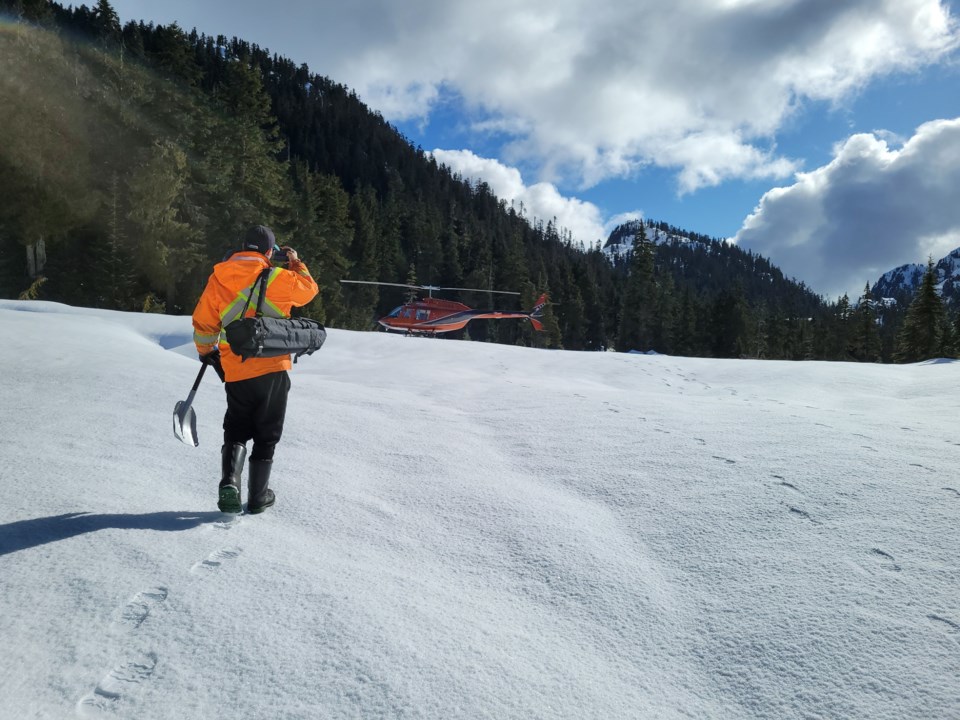April showers may bring May flowers, but the April snowpack can help the Sunshine Coast Regional District (SCRD) predict the water flow of the coming season – and when drought may begin.
At an April 14 committee meeting, general manager of infrastructure services Remko Rosenboom gave his first snowpack update of the year. On April 1, SCRD staff measured the snow water equivalent at Chapman Lake as 91 per cent of normal, or just below average, and Edwards Lake’s snow water equivalent at 94 per cent of normal.
Last year, the snow depth and water equivalent at the lakes was slightly above average, which Rosenboom said was a good example to show the relevancy of the snowpack later in the summer season can be limited, and is primarily used to determine when a drought can be expected to begin.
“Last year we had a good snowpack, and still we had a significant drought later in the year,” he said in his presentation.
Historically, measurements of water content in snow on April 1 are the highest of the season, but the snowpack is currently still growing at the lakes. Recent colder-than-usual weather could delay snow melt, which Rosenboom said would be beneficial. In late spring, temperature and rainfall will determine the rate of the snow melt, and the water supply conditions entering the summer.
The next snowpack survey is scheduled for May 1. The SCRD automatically begins Stage 1 water restrictions on the first of May every year, but new conservation regulations adopted on March 24 will also come into effect.
“Even if it’s cold outside, it’s good to start preparing,” Rosenboom said.
Church Road project under way
Construction at the new water treatment plant and on the Reed Road water mains began on April 11, and work is expected to continue into late May. As a result, there are changes to traffic flow and detour signs posted.
Archaeological test digging has been completed at the Elphinstone/Fisher Avenue water treatment plant site with the guidance of Sḵwx̱wú7mesh Nation. Rosenboom said further work is not anticipated.
Rosenboom also answered a question the SCRD has been receiving: a 1.5 metre-wide gravel path between North and Fisher Roads has always been part of the project.
“Things are happening big time,” Rosenboom said as he showed photographs of the “real groundbreaking” for the transmission line where the new treatment facility is being built.
Status of supply expansion projects
Soon, the drilling and testing of potential production wells will begin for the Langdale well field development, Rosenboom said, after they wait for final approval for archaeology. Based on the test results, the SCRD will work on the preliminary design and water licence application this spring or summer, and staff are continuing to monitor Langdale Creek to determine any impacts to the water flow.
A two-year contract to monitor the flows for the Gray Creek water treatment upgrade has been awarded. The monitoring will confirm whether the effects of climate change would allow the drawing of water from the creek “so that we’re not building a new treatment facility there and then finding out five years later that there is no water anymore in the creek,” Rosenboom said.
The SCRD is awaiting final approval from the ministry to get geotechnical drilling under way for the raw water reservoir, on the east side of Chapman Creek. That drilling is scheduled for this summer.
A monitoring plan for the Maryanne West Park well has been developed, but not initiated yet.
During the committee meeting, the directors also received a report on best practices for water meter data, and another about developing an SCRD water strategy that is expected to include public input and be presented for board approval in 2023.




